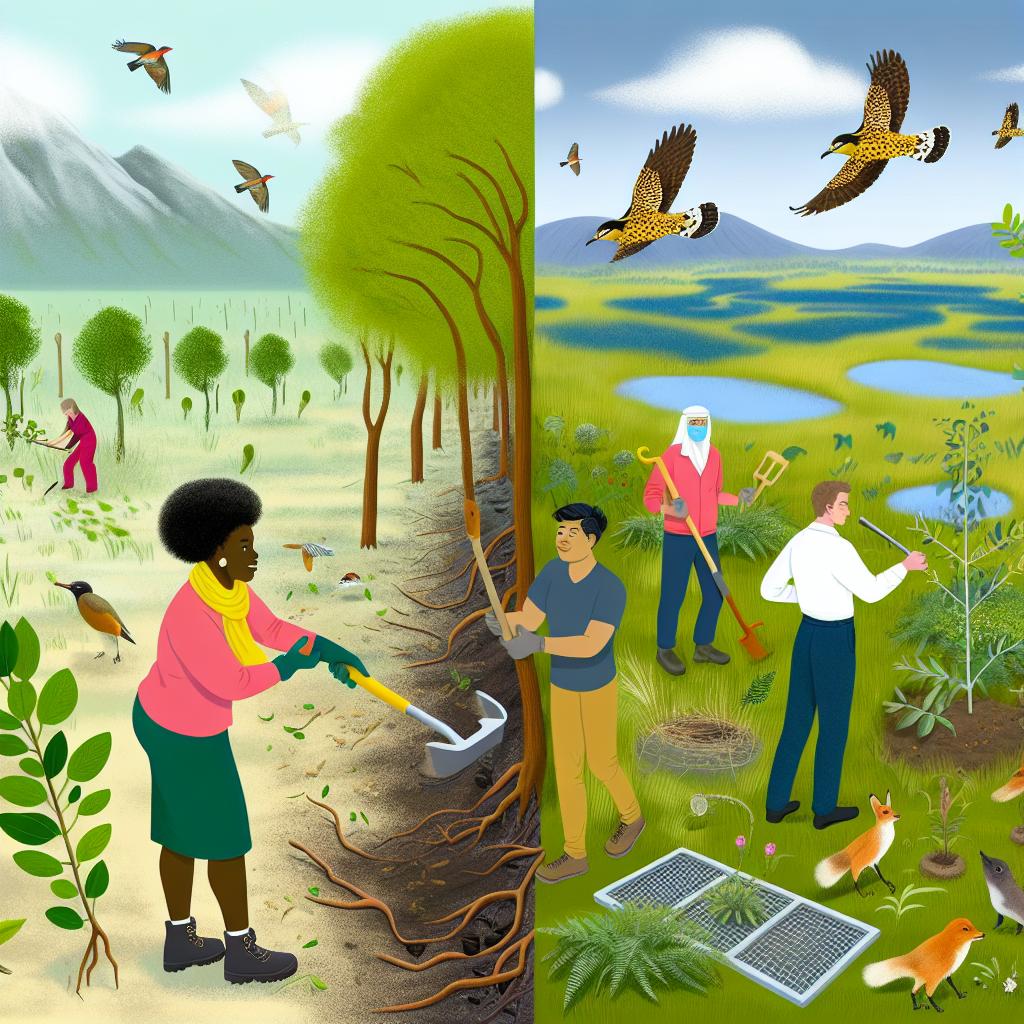
How Rewildering Can Help Combat Climate Change
Introduction to Rewildering
Rewildering, interchangeably used with the term rewilding, represents an approach within ecological restoration that emphasizes the reintroduction and management of natural processes to allow landscapes to become self-sustaining. It is receiving growing attention as an effective strategy in the fight against climate change. By recreating and restoring natural ecosystems, rewildering not only aids in the sequestration of carbon but also plays a significant role in boosting biodiversity and fostering landscapes resilient to climate-related disruptions.
Carbon Sequestration
A notable advantage of rewildering is its capability to enhance carbon sequestration. Natural environments such as forests, wetlands, and grasslands serve as carbon sinks—they absorb carbon dioxide from the atmosphere and store it, thus playing a critical role in controlling global climate change. Through rewildering, these ecosystems can recover and regain their capacity as effective carbon capturers. Take, for example, the restoration of a degraded forest area. Over time, as the biomass of the forest increases, a proportional increase in carbon capture can be observed. Enabling such ecosystems to flourish ultimately serves both environmental and human interests by acting as a natural bulwark against excessive carbon emissions.
Biodiversity Enhancement
One of the core tenets of rewildering is its ability to augment biodiversity, which is pivotal for the resilience and robustness of ecosystems. By facilitating the reintroduction of native species and allowing vital ecological interactions to manifest organically, rewildering fosters a rich biodiversity that contributes to the ecosystem’s intrinsic stability. Enhanced biodiversity is synonymous with the emergence of complex, resilient ecosystems capable of weathering the challenges posed by climate change. For instance, the reintroduction of apex predators can aid in maintaining balanced animal populations, leading to a diversified and dynamic food web.
Water Cycle Regulation
The restoration of natural landscapes through rewildering has a pronounced impact on the regulation of water cycles. Healthy ecosystems are adept at managing water through improved soil absorption, reduced surface runoff, and enhanced groundwater recharge. A case in point is wetlands, which function as natural sponges, significantly mitigating the impacts of floods and droughts. The regulation of water cycles is an integral component of rewildering, offering a natural method of adapting to and coping with the increased frequency of extreme weather events stemming from climate change.
Building Resilient Landscapes
In promoting robust landscapes, rewildering ensures that natural processes such as seed dispersal, natural grazing, and regular fire regimes are restored. In turn, this creates habitats that are better suited to adapt to fluctuating environmental conditions. Such resilient ecosystems are well-equipped to endure disturbances and continue to provide vital services like clean air, water, and fertile soil. The importance of natural habitats cannot be overstated, as their resilience directly correlates with their ability to fortify against climate-induced stressors.
Challenges and Considerations
Despite its numerous advantages, rewildering is not without its challenges. A key requirement of rewildering is meticulous planning to avert the potential adverse effects associated with species reintroduction and the reinstatement of natural processes. Furthermore, land use conflicts are a plausible issue, especially in areas where the land has been historically earmarked for agricultural or urban development. A holistic approach that encompasses effective communication and collaboration with local communities and stakeholders is indispensable to the successful realisation of rewildering initiatives.
Conclusion
Rewildering presents a compelling approach to alleviate some of the adverse effects of climate change. Restoring natural ecosystems can facilitate the sequestration of carbon, bolster biodiversity, aid in water cycle regulation, and lay the foundation for resilient landscapes. Nonetheless, it is imperative to navigate the challenges associated with rewildering with caution and diligence. Capitalizing on the benefits requires a concerted effort in planning and community engagement. For those interested in delving deeper into the topic of rewildering and its profound impact on combating climate change, authoritative resources from leading environmental organizations such as the World Wildlife Fund or the Nature Conservancy offer valuable insights and guidance.